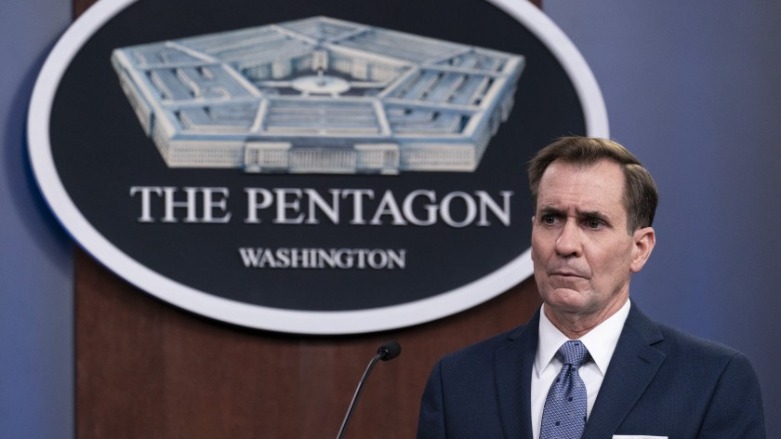US deploying new troops to Europe, amid sharpened Russian tensions

WASHINGTON DC (Kurdistan 24) – The Pentagon announced on Wednesday that it was sending additional military forces to Eastern Europe, in the face of ongoing Russian threats to Ukraine.
In an unusual morning briefing, Pentagon Press Secretary John Kirby announced the news, saying, “It’s important that we send a strong signal to Mr. Putin and, frankly to the world that NATO matters to the United States, and it matters to our allies.”
The Pentagon also released a fact-sheet describing the movement of the 3,000 troops. They are entirely US forces—as distinct from those described in a Pentagon statement last week, when it announced that it was placing 8,500 troops on heightened alert, most of them in the US, for possible deployment, if requested, as part of a NATO Response Force.
Wednesday’s fact-sheet explained that the US troop movements are “part of our commitment to upholding the principles of the rules-based international order and to the security of our NATO allies.”
They involve shifting 1,000 US troops from Germany to Romania. In addition, 2,000 troops are moving from the US to Poland and Germany. Most of those forces will go to Poland and a smaller number to Germany.
Those troop movements are being made at the request of Romania, Germany, and Poland.
Like Ukraine, Poland shares a border with Belarus, which is a close ally of Moscow. Russia is increasing the size of its forces in Belarus in advance of joint military exercises there, which will be held from Feb. 10 to 20.

Stunningly, many Kurds sought to cross that very frontier—the border between Belarus and Poland—which may well become the scene of an armed stand-off between NATO and Russia in the misguided belief they could gain entry into the European Union.
Putin Seen as Not Credible
On Tuesday, Hungary’s right-wing populist leader, Viktor Orban, visited Moscow. Although Hungary is a member of both NATO and the European Union, Orban has cultivated close ties with Russia, prompting concern among members of both organizations.
In a joint press conference following their meeting, Russian President Vladimir Putin blamed the US for the tensions over Ukraine, claiming that Washington was trying to goad Russia into attacking that country.
Still, Putin said “he hoped that ‘dialogue’ will be continued,” as The New York Times reported on Tuesday, in a story whose headline began, “Putin Signals Openness to Diplomacy.”
Clearly, that is not the view in Washington or among key NATO capitals, as the Pentagon’s announcement on Wednesday morning suggests.
The ancient Chinese military strategist, Sun Tzu, famously wrote, “All war is deception,” and there is concern that Putin is engaged in precisely that.
No Evident Reason for Russian Aggression
“None of the fears” Moscow is touting “have any foundation in reality,” Carl Bildt, a former Swedish Prime Minister, wrote last week in The Washington Post.
“The last consequential NATO expansion was decades ago,” he continued. “No one was seriously contemplating NATO membership for Ukraine or Georgia. Plans for US missiles in eastern Ukraine targeting Russia are pure fantasy.”
So what is going on? That is one aspect of the problem. It is very difficult to understand what Putin intends.
To Middle East experts whose memory reaches back far enough, Putin’s posture resembles that of Saddam Hussein in 1990, before he invaded Kuwait.
That is what Col. Norvell De Atkine (US Army, Retired) who long taught Middle Eastern political-military affairs at Fort Bragg, told Kurdistan 24.
In July, Saddam began to charge that Kuwait was stealing Iraqi oil and waging economic warfare against its much larger neighbor. A steady drumbeat of accusations followed, as Iraqi forces mobilized on Iraq’s southern border.
Kuwait, and key Arab states, believed that Saddam was merely using his forces as a way to pressure Kuwait. Moreover, there was concern that a US deployment might “provoke” Saddam.
So Kuwait rebuffed Washington’s offer to send US troops to protect the shaykhdom.
That was a huge blunder, of course. Very early in the morning of August 2, those forces crossed the border and rapidly—between the setting and the rising of the sun—occupied Kuwait in its entirety.
What Putin intends, and whether he is prepared to back down, remain to be seen.
